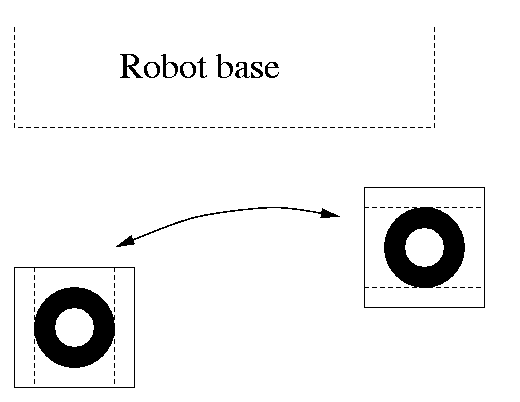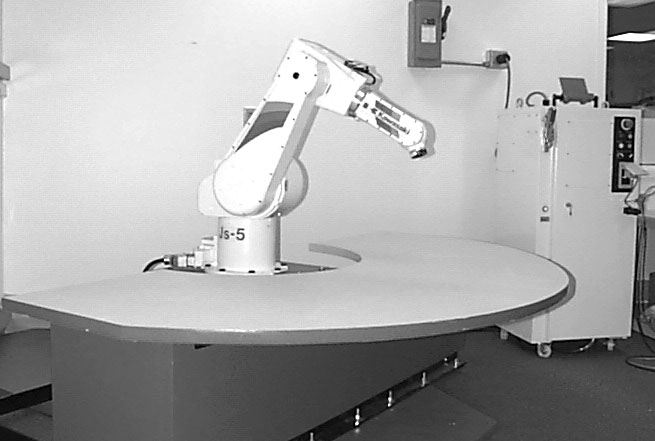
In manufacturing assembly operations, robots often perform what is called pick and place operations. As the name suggests, the robot picks up a part and places it somewhere else. For example, the robot may pick up a computer chip and insert it in the appropriate location on a circuit board. The way to program the robot to do this procedure is called teach and repeat. You teach the robot the required moves one time, and then it should be able to repeat the maneuver indefinitely. This project is an simple introduction into the programming required to make the Kawasaki JS5 (illustrated below) in the robotics lab do this. This project should be very easy, and is an illustration of the types of robotics concepts that are necessary for industrial application.

This lab description is intentionally incomplete. To get the robot to even move at all, at least one member of the group will have to consult with one of the course TA's to learn how to use the teach pendant to steer and program the robot.
jmove
lmove
here
home
See the AS Programming reference manual (in the lab near the JS5) for details of each of these commands. Feel free to use other commands as well. In addition to the AS programming commands, you will need to use several interface commands via the teach pendant. These include:
dir
list
prime
ex
In the lab (357C Fitzpatrick) you will find the robot and a TA. There is a small "fork-lift" end effector attached to the end of the robot. Using that, you are going to program the robot to lift the small "pallets" from some starting position and place it in some final position.
The task is to program the robot to "swap" two pallets as
illustrated in the following figure.

There are markings on the base of the robot that indicate the initial positions of the two pallets.
Outline: using the manual control pendant, you will be able to manually direct the robot through the steps necessary to swap the pallets. Note that when using the teach pendant to manually move the robot there are three different modes of operation. There are:
here point_name
command, (where point_name is something like "p1" "p2" etc.)
you will be able to name or define the various points, which
then could be used in a program with the
jmove point_name
command to have the robot automatically
go through the sequence of steps necessary to swap the pallets.
The program must start in the "home" position (straigt up).
Once you have defined the points, written the program and successfully swapped the pallets one time, you should see how many times in a row you can repeatedly swap the two pallets without interfering. Part of the grade depends upon how many times you can swap the pallets in a 5 minute period.
Use the commands
prime
and
ex
to execute the program. Important: do not execute
any programs without consulting the TA first.
The total grade the project is 100 points. 80 points will be based upon the results presented in a report written consistent whit the report guidelines. The allocation for the final 20 points is based upon the following 2 considerations:
Return to the AME 469 Homepage.